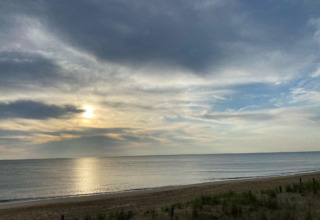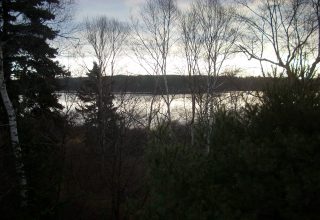
Gary Quehl and William Bergquist
[For the complete report on this project see The Sages Among Us: Harnessing the Power of Civic Engagement, available as a link through the LPC Bookstore.]
The histories and the peak experiences in the lives of the 50 emerging and 50 senior sage leaders in Grass Valley and Nevada City reflect fewer similarities than differences.
Histories of the Sage Leaders
What these leaders most share in common are their birth state of California, their current place of residence in Western Nevada County (mostly Nevada City or Grass Valley), high educational attainment, the state in which most attended college (California), and very little military experience. The two leadership groups differ most on gender, age, family background, work/retirement status, and career choice. In any event, the personal histories of emerging and senior sage leaders are varied and rich with meaning.
Histories of the 50 Emerging Sage Leaders:
Histories of the 50 Senior Sage Leaders:
 You will become acquainted in two of the essays in this issue of Sage with the cast of characters who are joining us in this story about emerging and senior sage leaders in Twin Towns. In future issues of Sage we turn to the life experiences and perspectives of these men and women. Within each of these issues we look first at the 50 emerging sage leaders and then the 50 senior sages, offering anonymous quotations from our in-depth interviews with them. In the reflection essays we also introduce concepts from the literature on adult development, leadership, motivation, and related fields. For some readers, the world of sage leadership is most likely to come alive through the powerful quotations being offered in each issue. Other readers may be more likely to appreciate the synthesis and analysis offered in the reflections. We hope that both approaches contribute to a full appreciation of the richness and complexity of the lives, perspectives, and contributions made by these 100 remarkable men and women on behalf of Grass Valley and Nevada City.
You will become acquainted in two of the essays in this issue of Sage with the cast of characters who are joining us in this story about emerging and senior sage leaders in Twin Towns. In future issues of Sage we turn to the life experiences and perspectives of these men and women. Within each of these issues we look first at the 50 emerging sage leaders and then the 50 senior sages, offering anonymous quotations from our in-depth interviews with them. In the reflection essays we also introduce concepts from the literature on adult development, leadership, motivation, and related fields. For some readers, the world of sage leadership is most likely to come alive through the powerful quotations being offered in each issue. Other readers may be more likely to appreciate the synthesis and analysis offered in the reflections. We hope that both approaches contribute to a full appreciation of the richness and complexity of the lives, perspectives, and contributions made by these 100 remarkable men and women on behalf of Grass Valley and Nevada City.
In setting the stage for these comments by sage leaders (both emerging and senior) and reflections on the nature of sage leadership in community engagement and development, we begin with two essays in this issue that examine some of the poignant moments in the lives of these leaders—poignant moments (“peak experiences”) that do much to shape their commitment to and enactment of sagacious leadership on behalf of their community.
Peak Life Experiences: The Beginning of Emerging Sage Leadership
Peak Life Experiences: The Beginning of Senior Sage Leadership
Peak Experiences
In his 1964 book, Religions, Values, and Peak Experiences, psychologist Abraham Maslow introduced the concept of the peak experience. (Endnote 1) In his meaning, a peak experience is a sudden feeling of intense well-being that fills a person with wonder, awe, interconnectedness, and clarity, and which creates a flow of changes that give a renewed and lasting sense of meaning and purpose to life.
For Maslow, the peak experience is characterized by immediate intense pleasure, euphoria, and the absence of negativity. But for our purpose in understanding the lives of sage leaders, we see peak experiences resulting from negative and positive life experiences. And not only from a single sudden incident. They also can come from a series of reinforcing experiences that emerge over time and are, nevertheless, transformative and lasting.
This means that the nature of peak experiences can be as different as the people who have them. Some peak experiences result from religious or spiritual encounters, others from mentors or teachers. Still others involve unusual events like a mother looking for the first time into the face of her newborn child, a person somehow surviving a disastrous car accident and wondering why, the euphoria that comes from completing a first marathon run, or the awe that arises from experiencing the profound beauty of nature. For our purpose in understanding sage leaders, peak experiences are what sages say they are—turning points in their lives that are transforming and help to shape who and what they are today. This is a key point we wish to make in the two essays included in this second issue of Sage. We have found that sage leaders of all ages tend to have had one or more peak experiences that were turning points or to use a term that is currently in vogue – a tipping point. (Endnote 2)
Sage Leadership Interviews
As we did in Issue One of Sage, a more intimate and detailed portrait of two sage leaders who were interviewed for the project is offered. One of the interviews features Emerging Sage Leader Richard Baker. Richard is a fifth generation native of Nevada City, where he is a partner of Lifeline Architecture and Vice President of the Nevada Joint Union High School District Board of Trustees. He is also a past Board Chair of the Center for the Arts.
Senior Sage Leadership is represented in the interview conducted with Barbara Thomas. Barbara is Board Chair of the Center for the Arts and a member of the Center for Nonprofit Leadership Board and the Civic Engagement Steering Committee in Nevada County, California. She is also a past Board Chair of The Friendship Club.
_____________
Notes
: Abraham Maslow, Religions, Values and Peak Experiences, 1964.
2: Malcom Gladwell, The Tipping Point, 2000.
_____________

















